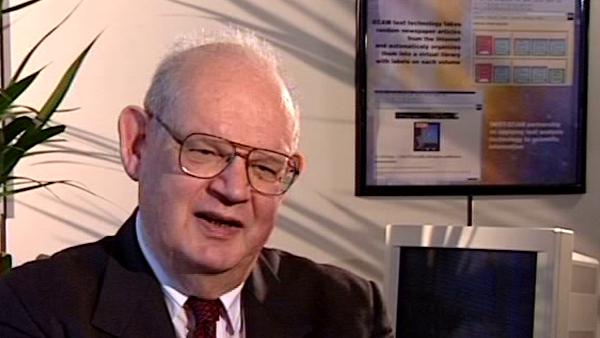NEXT STORY

Calculating the length of a coastline
RELATED STORIES

NEXT STORY

Calculating the length of a coastline
RELATED STORIES


|
Views | Duration | |
|---|---|---|---|
| 51. Results of work in errors of transmission | 326 | 02:14 | |
| 52. Robert Stewart and a return to an interest in turbulence | 339 | 03:15 | |
| 53. The Hausdorff Dimension | 548 | 02:41 | |
| 54. The birth of fractals | 806 | 03:07 | |
| 55. Calculating the length of a coastline | 550 | 03:57 | |
| 56. The River Nile and Infinite Systems | 443 | 03:22 | |
| 57. Wild randomness and globality | 408 | 03:06 | |
| 58. Self-organised criticality | 371 | 01:43 | |
| 59. Measuring roughness | 338 | 03:02 | |
| 60. Working 'before the limit' | 326 | 03:32 |


So this brings us to the birth of fractals. Yes. Now, how did it happen? Why did it happen? Why? Well, aside from the great interest, in fact enthusiasm, by many people I greatly admired, there was a feeling from many people that I was talking nonsense, that I was obfuscating, that I was introducing a dimension in a context where it didn't belong, that I was trying to, to pull a fast one. It was very difficult to tell them that this esoterica was actually saying something very real.
Then one day, once again, chance favoured me and I noticed a picture in an article in a book that was being thrown away by the library, which was the length of coastlines as measured at different levels of precision by Lewis Fry Richardson. Richardson had been a major figure in turbulence, so I knew his name, but he had moved away from it and this paper was found in his papers after his death, published by faithful followers in a very inappropriate magazine and was just as throwaway esoterica of some kind; poor old man, measuring coast lines at different scales and nothing comes out of it. No serious periodical published it, but I think The Journal of Conflict Resolution or something, a very esoteric magazine, published it because of this man's stature in certain circles. So, I became convinced that what Richardson was measuring was a dimension and I found, in a certain sense, a key or a bridge, something to hold everything together. Because as long as I was trying to explain to people in turbulence that a dimension was something radical, they were fleeing away from it. In economics they couldn't stand it, and I didn't mention it in my story of the river Nile and such rivers. The hydrologists were terrified; the thought of a dimension that was not an integer, and of variables that were not independent, that had long-term dependence, all these things were terrifying. I just wanted to have a rhetorical device to help them stop criticising and start listening, and perhaps it was a tactical manoeuvre of a classical kind. If you can't hit them by frontal attack, you just get them on the side. I mean, I don't like the exaggeration of images of science as being the conquest of the unknown, but to a large extent there is a hint of truth about it, and for me I always have a strategy of research, and a tactic, and the two are very separate. I don't chose tactics on strategic grounds or strategy on tactical grounds. They are separate ideas.
Benoît Mandelbrot (1924-2010) discovered his ability to think about mathematics in images while working with the French Resistance during the Second World War, and is famous for his work on fractal geometry - the maths of the shapes found in nature.
Title: The birth of fractals
Listeners: Daniel Zajdenweber Bernard Sapoval
Daniel Zajdenweber is a Professor at the College of Economics, University of Paris.
Bernard Sapoval is Research Director at C.N.R.S. Since 1983 his work has focused on the physics of fractals and irregular systems and structures and properties in general. The main themes are the fractal structure of diffusion fronts, the concept of percolation in a gradient, random walks in a probability gradient as a method to calculate the threshold of percolation in two dimensions, the concept of intercalation and invasion noise, observed, for example, in the absorbance of a liquid in a porous substance, prediction of the fractal dimension of certain corrosion figures, the possibility of increasing sharpness in fuzzy images by a numerical analysis using the concept of percolation in a gradient, calculation of the way a fractal model will respond to external stimulus and the correspondence between the electrochemical response of an irregular electrode and the absorbance of a membrane of the same geometry.
Duration: 3 minutes, 8 seconds
Date story recorded: May 1998
Date story went live: 24 January 2008